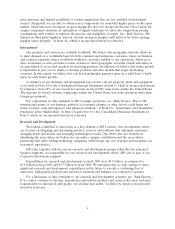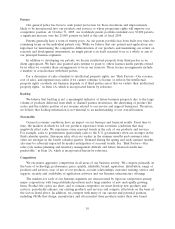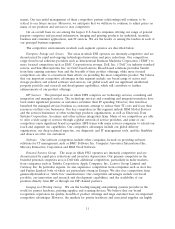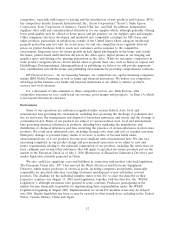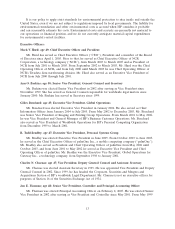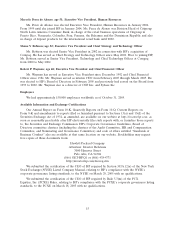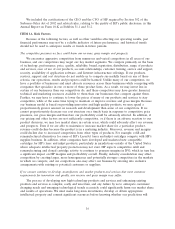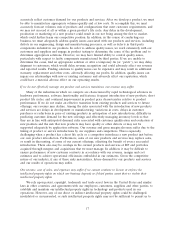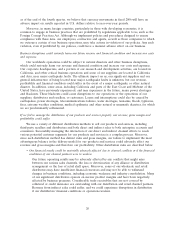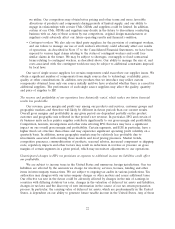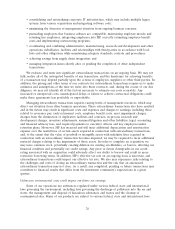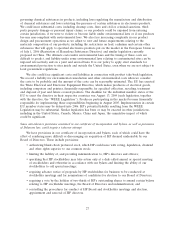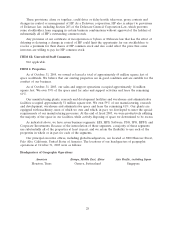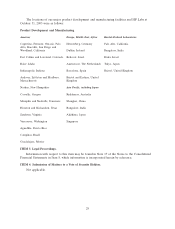HP 2005 Annual Report Download - page 23
Download and view the complete annual report
Please find page 23 of the 2005 HP annual report below. You can navigate through the pages in the report by either clicking on the pages listed below, or by using the keyword search tool below to find specific information within the annual report.Terrorist acts, conflicts and wars may seriously harm our business and revenue, costs and expenses and
financial condition and stock price.
Terrorist acts, conflicts or wars (wherever located around the world) may cause damage or
disruption to HP, our employees, facilities, partners, suppliers, distributors, resellers or customers. The
potential for future attacks, the national and international responses to attacks or perceived threats to
national security, and other actual or potential conflicts or wars, including the ongoing military
operations in Iraq, have created many economic and political uncertainties. In addition, as a major
multi-national company with headquarters and significant operations located in the United States,
actions against or by the United States may impact our business or employees. Although it is
impossible to predict the occurrences or consequences of any such events, they could result in a
decrease in demand for our products, make it difficult or impossible to deliver products to our
customers or to receive components from our suppliers, create delays and inefficiencies in our supply
chain and result in the need to impose employee travel restrictions. We are predominantly uninsured
for losses and interruptions caused by terrorist acts, conflicts and wars.
Due to the international nature of our business, political or economic changes or other factors could harm
our future revenue, costs and expenses and financial condition.
Sales outside the United States make up more than 60% of our revenue. Our future revenue,
gross margin, expenses and financial condition also could suffer due to a variety of international
factors, including:
• ongoing instability or changes in a country’s or region’s economic or political conditions,
including inflation, recession, interest rate fluctuations and actual or anticipated military or
political conflicts;
• longer accounts receivable cycles and financial instability among customers;
• trade regulations and procedures and actions affecting production, pricing and marketing of
products;
• local labor conditions and regulations;
• managing a geographically dispersed workforce;
• changes in the regulatory or legal environment;
• differing technology standards or customer requirements;
• import, export or other business licensing requirements or requirements relating to making
foreign direct investments, which could affect our ability to obtain favorable terms for
components or lead to penalties or restrictions;
• difficulties associated with repatriating cash generated or held abroad in a tax-efficient manner
and changes in tax laws; and
• fluctuations in freight costs and disruptions at important geographic points of exit and entry for
our products and shipments.
The factors described above also could disrupt our product and component manufacturing and key
suppliers located outside of the United States. For example, we rely on manufacturers in Taiwan for the
production of notebook computers and other suppliers in Asia for product assembly and manufacture.
As more than 60% of our sales are from countries outside of the United States, the relative
weakness of the dollar against other currencies, particularly the euro and the Japanese yen, has helped
HP’s results (expressed in U.S. dollars) in recent periods. Currency variations also contribute to
variations in sales of products and services in impacted jurisdictions. Based on our currency modeling
19


